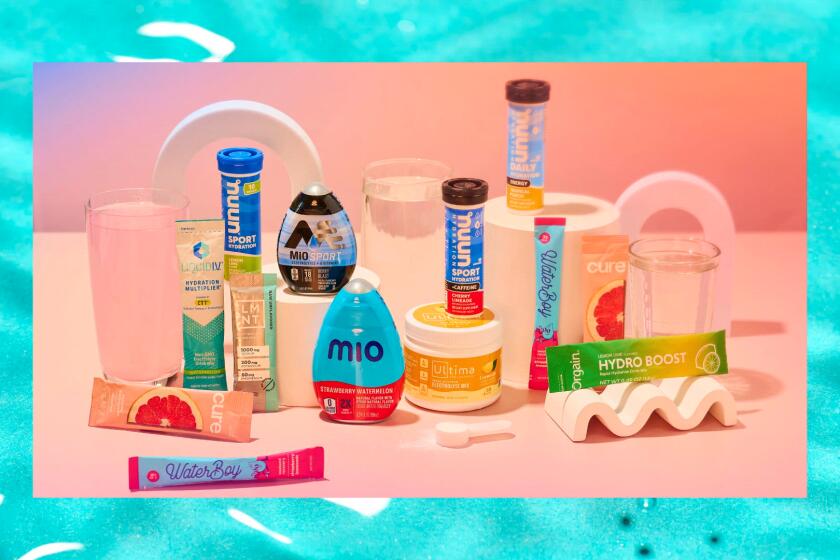Stemming the Red Tide
The phrase “the balance of nature” was never meant to cover home-grown tomatoes. From the day our tomatoes begin to blush in July to their last green gasp in November, we are in a constant state of tomato imbalance. We either have a surfeit or a shortage.
This year there were a few complicating factors. For the first time, the local fauna discovered our vegetable garden. All July we waited patiently for that hot, sunny day when the tomatoes would turn blood-red. The animals weren’t as patient; they scheduled nocturnal tomato feasts that were precisely timed for the night before we would have picked the ripe fruit. We lost the cream of the early season before we learned to snatch the tomatoes out of harm’s way just before they reddened, letting them ripen in safety on the windowsill.
In mid-August, in the days just prior to our annual two-week summer vacation on the East Coast, all of our “Big Beef” tomatoes ripened simultaneously. Frantically, I made tomato chutney and tomato jam (more about that later), served tomatoes morning, noon and night, gave friends our keys and pleaded with them to take lots of tomatoes. We returned to vines that, by some combination of our friends’ and the animals’ appetites, had been completely stripped of anything resembling a ripe tomato. The few remaining green tomatoes are continuing to ripen but are so sparse that I have been supplementing them from the farmers market.
*
Should you be fortunate enough to have a tomato oversupply crisis, home canning is a great way to deal with it. Ketchup, chili sauce, tomato chutney, even old-fashioned specialties such as tomato marmalade and tomato jam--I’ve tried them all. (Actually, I can’t recommend the latter; I prepared a recipe called tomato jam with ginger and cardamom, which sounded intriguing but tasted very strange. I let a friend sample a spoonful and she put her finger on the elusive sweet-savory flavor: Campbell’s tomato soup.)
For its ability to convert vast quantities of tomatoes into a tiny amount of intensely flavored condiment, nothing surpasses ketchup. Given a free afternoon, you can reduce a heaping colander of dead-ripe tomatoes to four little jars of the best stuff that ever adorned a burger.
Making ketchup is time-consuming and labor-intensive, but it tastes better than store-bought and you can fine-tune it to your taste, adding sugar, spices, vinegar or even more exotic ingredients. (Plus, dinner guests are so incredibly impressed that you made the ketchup they are likely to overlook the fact that you are serving them burgers.)
Tomato chutney is a lot less work than ketchup and is an equally welcome condiment for burgers, steaks and even grilled cheese sandwiches. It ages nicely too; I’ve kept tomato chutney for well beyond the prescribed year, and it only improves.
*
The end of the tomato season in the fall means a glut of green tomatoes that refuse to ripen. The best thing about green tomatoes is that they don’t have to be peeled (in fact, separating a green tomato from its peel is virtually impossible) and they just need a cursory seeding; the seeds are usually small and not noticeable in the finished product.
Green tomatoes go into one of my favorite chutneys, one that complements a variety of dishes. I didn’t do green tomato chutney last fall and missed it so much that I made it in early August with a batch of green tomatoes that showed up serendipitously at the farmers market.
Whether you are canning using your own tomatoes or commercially grown varieties, it is important to select firm fruit without cracks or rotten spots; cut away any small bruises or imperfections. Never use tomatoes that are overripe or in less than perfect condition.
A word on playing with recipes: It is always a good idea to taste a little of the hot ketchup or chutney from the pot to make sure it has the right balance of flavors. It is almost impossible to critically evaluate a boiling-hot mixture, however. Instead, spoon out a tablespoonful or so into a chilled bowl, then stick it in the freezer while the ketchup or chutney continues to simmer. Once the spoonful has cooled, it is much easier to judge its taste. Cooling a spoonful is also a good way to make sure the mixture has cooked down to the proper consistency.
*
If you adjust canning recipes, remember not to reduce the proportion of vinegar to tomatoes; using too little vinegar can cause spoilage. When cooking, a chutney mixture may smell and taste overly vinegary, but that is because the vinegar flavors are volatile under heat and seem more pronounced. Once a chutney has been allowed to age for a month or so, vinegar flavors mellow.
*
Complete canning instructions are available in cases of canning jars and should be followed explicitly. Basic canning equipment includes a large canning kettle with a wire basket to hold the jars in a boiling water bath; canning jars; two-piece vacuum lids and screw bands; a couple of clean dish towels or paper towels; an accurate kitchen timer; and a large, non-reactive saucepan. (Non-reactive refers to a material that does not react with acids or salts in the food. Avoid iron, aluminum, galvanized tin, unlined copper or brass. Use enameled, stainless steel or non-stick saucepans.) Other helpful items for home canning include a jar lifter, a wide-mouthed jar funnel, and a non-metallic spatula for releasing air bubbles from filled jars.
The venerable “Ball Blue Book,” put out by the canning jar company, is available by mail order from Direct Marketing, Alltrista Corp., P.O. Box 2005, Muncie, Ind. 47307; or by phone using a credit card at (317) 281-5227. The cost for the softcover book is $4.50, which includes shipping and handling.
*
Adapted from “Ball Blue Book, Edition 32” (Alltrista Corp.: Muncie, Ind.).
TOMATO KETCHUP
4 quarts peeled, cored, quartered ripe tomatoes
1 cup chopped onions
1/2 cup chopped sweet red pepper
1 1/2 teaspoons celery seeds
1 teaspoon whole allspice
1 teaspoon mustard seeds
1 stick cinnamon
1 teaspoon whole cloves
1/2 cup light-brown sugar, packed
1 1/2 teaspoons salt
1 1/2 cups white vinegar
2 teaspoons paprika
In large, non-reactive saucepan cook tomatoes, onions and red pepper until tender, about 45 minutes. Put through food mill (if food mill is fine enough to catch all tomato seeds) or sieve. Cook over medium-high heat until thick and volume has been reduced by nearly half, about 1 hour.
Tie celery seeds, allspice, mustard seeds, cinnamon and cloves in cheesecloth bag. Add to ketchup along with sugar and salt. Cook gently about 25 minutes, stirring frequently to prevent sticking. Add vinegar and paprika. Cook until thick, about 1 hour, stirring frequently. Remove spice bag. While hot, pour into sterilized 1/2-pint jars, leaving 1/4-inch head space. Adjust caps. Process 10 minutes in boiling water bath. Makes 4 to 5 (1/2-pint) jars.
Each 1-tablespoon serving contains about:
19 calories; 61 mg sodium; 0 cholesterol; 0 fat; 4 grams carbohydrates; 1 gram protein; 0.42 grams fiber.
*
Adapted from “Jams, Pickles & Chutneys,” (Charles Letts & Co. Limited: London, 1991).
TOMATO CHUTNEY
4 1/2 pounds ripe tomatoes
6 medium onions
4 green apples
6 peaches
5 1/2 cups dark brown sugar, packed
1 quart white vinegar
2 teaspoons salt, or to taste
1 teaspoon ground cloves
1 teaspoon ground coriander
2 teaspoons chili powder
Peel and coarsely chop tomatoes, onions, apples and peaches. Combine with sugar, vinegar, salt, cloves, coriander and chili powder in large, non-reactive saucepan. Bring slowly to boil and simmer, uncovered, about 2 hours or until mixture is thick, stirring occasionally.
Spoon into hot 1/2-pint jars, leaving 1/4-inch head space. Adjust caps. Process 10 minutes in boiling water bath. Makes about 13 (1/2-pint) jars.
Each 1-tablespoon serving contains about:
21 calories; 25 mg sodium; 0 cholesterol; 0 fat; 5 grams carbohydrates; 0 protein; 0.12 gram fiber.
*
Adapted from “Perfect Preserves” by Nora Carey (Stewart, Tabori & Chang: 1990).
GREEN TOMATO CHUTNEY
6 pounds green tomatoes
2 tablespoons salt
2 pounds green apples, peeled, cored and coarsely chopped
1 pound red onions, thinly sliced
6 cloves garlic, minced
2 teaspoons grated ginger root
3 cups red wine vinegar
1 teaspoon crushed red pepper
1 teaspoon ground cumin
1/2 teaspoon ground cloves
1/4 cup dry mustard
2 1/2 cups dark brown sugar, packed
1 1/2 cups currants
Core and halve tomatoes crosswise. Seed as much as possible. Chop into 1/2-inch pieces. In bowl toss with salt. Let drain in colander 2 hours.
In large, non-reactive saucepan combine drained tomatoes, apples, red onions, garlic, ginger and 2 cups vinegar. Bring mixture to boil over low heat. Let simmer, stirring frequently, 30 minutes.
Add remaining 1 cup vinegar, crushed red pepper, cumin, cloves, mustard and sugar. Simmer chutney, stirring frequently, 45 minutes, or until reduced by about 1/4.
Add currants during last 10 minutes of cooking. Spoon chutney into hot pint jars, leaving 1/2-inch head space. Run non-metallic spatula around inside of each jar to get rid of air pockets. Adjust caps. Process 10 minutes in boiling water bath. Makes 6 pints.
Each 1-tablespoon serving contains about:
19 calories; 77 mg sodium; 0 cholesterol; 0 fat; 5 grams carbohydrates; 0 protein; 0.14 gram fiber.
Barrett writes on food, wine and travel.
More to Read
Eat your way across L.A.
Get our weekly Tasting Notes newsletter for reviews, news and more.
You may occasionally receive promotional content from the Los Angeles Times.






